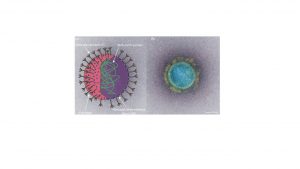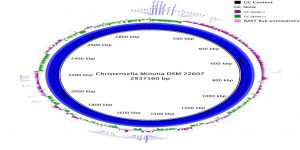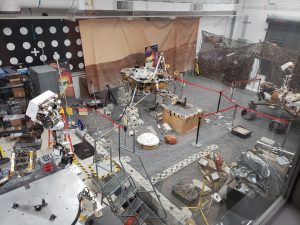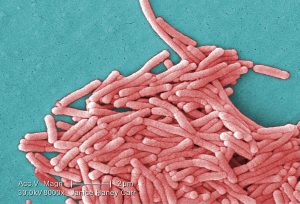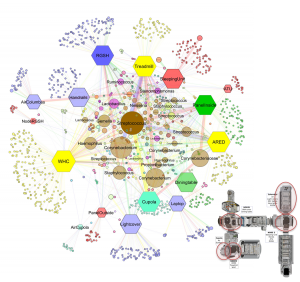(updated 4/7/20 with revised preprint and publication information) So late last week, the folks at the BioBE Center at the University of Oregon contacted us wanting to write a review of built environment considerations related to the 2019 Novel Coronavirus (COVID-19) outbreak. We worked furiously on it for a couple of days and through the …
So this work is a spinoff of a big project that we were involved in (but almost all of the work was done by Amy Pruden’s lab at Virginia Tech). In the larger project, they examined the genomes of over 100 clinical isolates of Legionella pneumophila, as well as 10 clinical isolates from patients during …
So way back in 2014 a really interesting paper came out about a family of bacteria called Christensenellaceae, which was found to be the most heritable group in the human gut microbiome. Furthermore this group (represented by Christensenella minuta) was furthermore associated with low BMI. Most intriguingly, mouse work demonstrated that the injection of cultured …
I have been trying to collect information about the new coronavirus and transmission via fomites (objects or materials such as door handles, clothing, phones, etc). Yesterday I posted to Twitter asking for input and got a large collection of useful responses. See these two tweets and the responses to them. I highlight some key responses …
So this last week, we ran a workshop on bacterial genomics at the Jet Propulsion Laboratory (JPL). Who is “we”? An amazing collaboration across several institutions. The whole thing was initiated by Dr. Parag Vaishampayan (NASA-JPL), who contacted myself (UC Davis), Dr. Elinne Becket (Cal State San Marcos), and Dr. Kenisha Johnson (Alabama A&M) about …
Skin-associated bacteria are abundant indoors. A comparison across studies shows that up to 30% of bacterial sequences detected indoors are associated with the human body (see Table 1 in this 2016 paper). I’ve been kind of skeptical that these sequences represented live organisms, however. Rather, I suspected the high proportion of sequences that were human-associated …
Job posting below: Postdoctoral Research Associate Western Human Nutrition Research Center Davis, California (Research Microbiologist) Salary Range of $67,574 to $80,993 Announcement Open: December 1, 2019 through January 31, 2020 The USDA, Agricultural Research Service, Western Human Nutrition Research Center in Davis, California, is seeking a POSTDOCTORAL RESEARCH ASSOCIATE, (Research Microbiologist) for a TWO YEAR …
Just a quick post here pointing people to this news story. I do not know the details of the science /proof here but this certainly seems of potential interest. SEATTLE (KOMO) – Five more deaths have been linked to infections from a mold in operating rooms at Seattle Children’s Hospital, CEO Dr. Jeff Sperring revealed …
So this was a very interesting paper to be involved in. On the one hand all our lab really did was to facilitate some genome sequencing and help with the assemblies, validation of those assemblies, and some genomics work. Standard fare for the lab. But… these were over 100 Legionella pneumophila isolates collected from either …
Human space exploration beyond Earth and Moon is a declared goal of NASA, ESA, Roscosmos and other space-faring agencies, with human Mars mission envisioned in the near future. One of the major challenges of the mission is protecting the human crew from illness and infection caused by harmful biological contaminants. To evaluate these challenges in …
